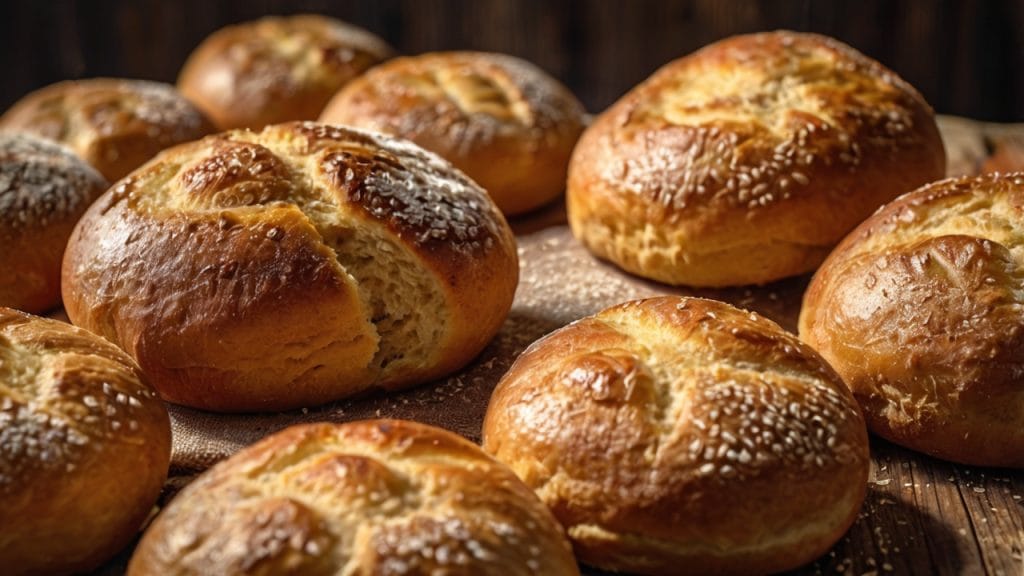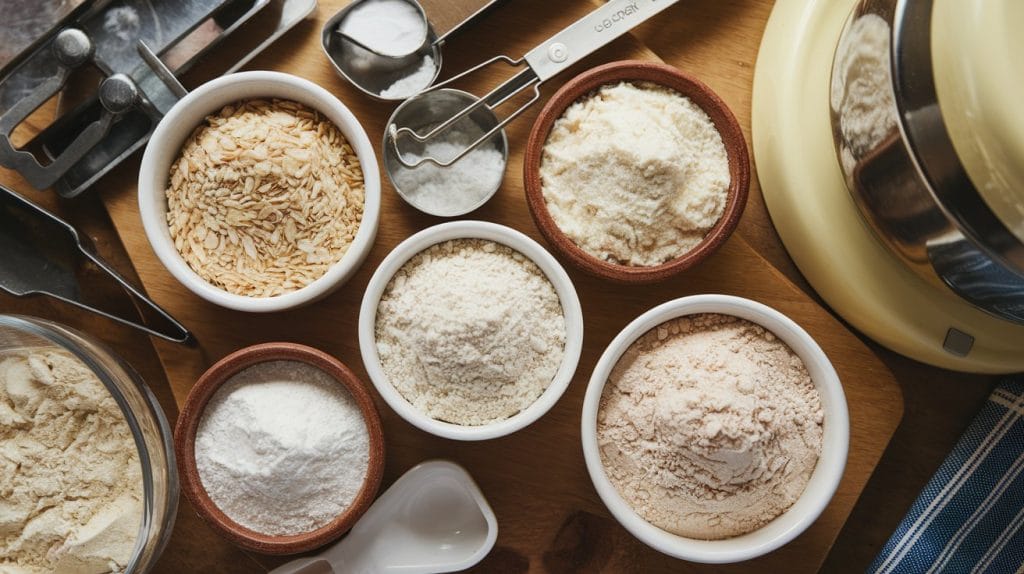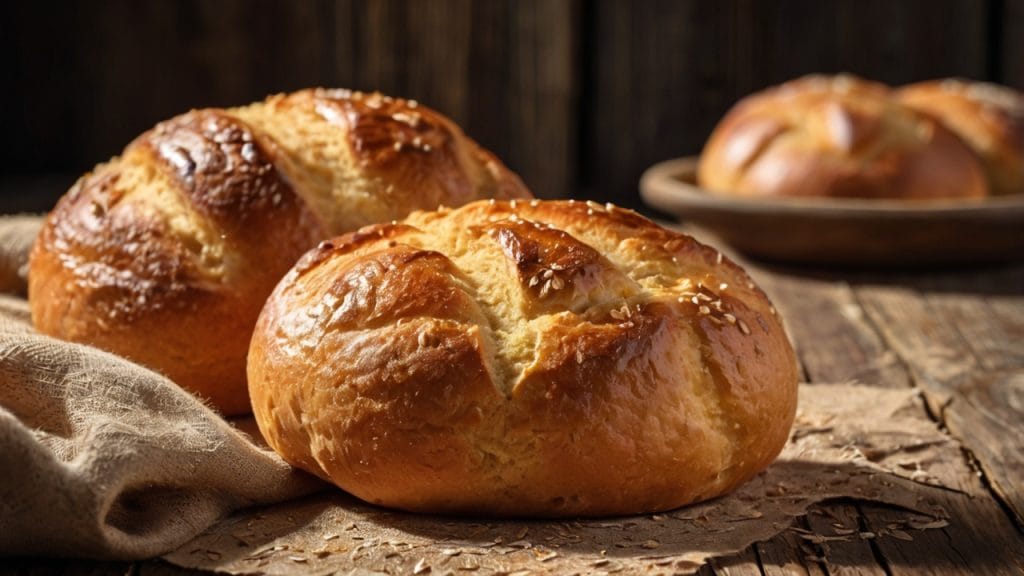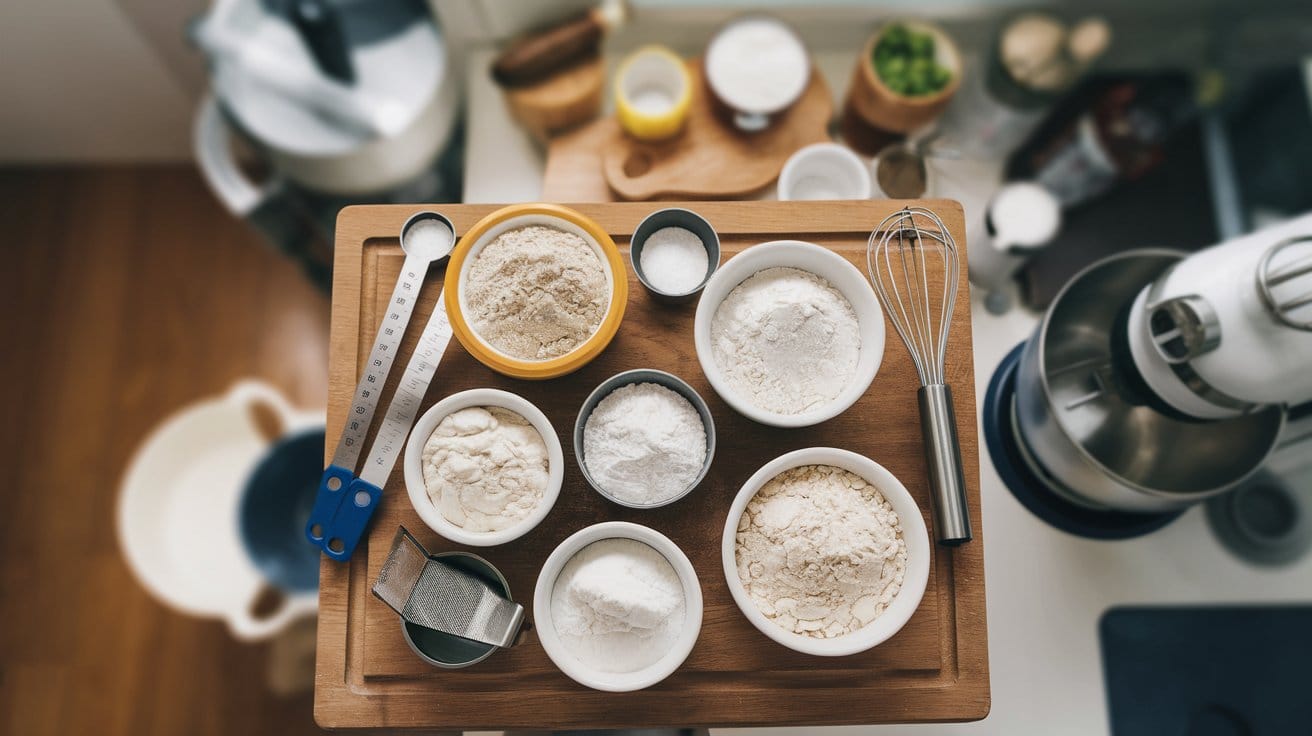Table of Contents
- Introduction
- Understanding Gluten-Free Flours
- Essential Ingredients for Gluten-Free Baking
- Techniques for Achieving Fluffy Textures
- Tips for Perfect Gluten-Free Buns
- Common Mistakes to Avoid
- Conclusion
Introduction
Embarking on a gluten-free baking journey can seem daunting, especially when it comes to creating those perfect, fluffy buns we all crave. But fear not! With the right gluten-free baking tips for beginners, you’ll be whipping up delicious, pillowy buns in no time. This guide will walk you through the essentials of gluten-free baking, focusing on creating irresistible buns that’ll have everyone asking for seconds.
Gluten-free baking doesn’t have to be a mystery. By understanding the unique properties of gluten-free flours and mastering a few key techniques, you’ll be well on your way to baking success. Whether you’re new to the gluten-free lifestyle or just looking to expand your baking skills, these tips will help you create buns that are so good, no one will believe they’re gluten-free!

Understanding Gluten-Free Flours
One of the most crucial gluten-free baking tips for beginners is to understand the various flours available. Unlike traditional wheat flour, gluten-free baking often requires a blend of different flours to achieve the right texture and flavor. Let’s explore some popular options:
- Rice Flour: A staple in many gluten-free blends, rice flour provides structure but can be a bit gritty on its own.
- Almond Flour: Adds moisture and a subtle nutty flavor, perfect for adding depth to your buns.
- Tapioca Starch: Helps bind ingredients and creates a chewy texture.
- Potato Starch: Adds moisture and helps create a tender crumb.
- Sorghum Flour: Offers a wheat-like flavor and helps with browning.
Creating the right blend is key to successful gluten-free baking. Many bakers prefer to use a pre-made all-purpose gluten-free flour blend for convenience. These blends are carefully formulated to mimic the properties of wheat flour. Check out our guide on the best gluten-free flour blends for perfectly fluffy buns to find the perfect mix for your baking needs.
Essential Ingredients for Gluten-Free Baking
Beyond flour blends, there are several other ingredients that play crucial roles in gluten-free baking:
- Xanthan Gum: This ingredient helps mimic the elasticity that gluten provides in traditional baking. It’s essential for creating structure in your buns.
- Psyllium Husk: Another binding agent that can help improve texture and add fiber to your baked goods.
- Eggs: They provide structure, moisture, and help with leavening. For vegan options, flax eggs or commercial egg replacers can work well.
- Yeast: Essential for creating those airy, fluffy buns we’re after. Make sure to use gluten-free certified yeast.
- Sugar: Besides adding sweetness, sugar helps feed the yeast and contributes to browning.
Remember, when it comes to gluten-free baking tips for beginners, having the right ingredients on hand is half the battle!

Techniques for Achieving Fluffy Textures
Creating that perfect, fluffy texture in gluten-free buns can be challenging, but it’s far from impossible. Here are some techniques to help you achieve bun perfection:
- Proper Mixing: Unlike traditional baking, gluten-free batters benefit from longer mixing times to help develop structure. Don’t be afraid to beat your batter for 3-5 minutes.
- Resting Time: Let your dough rest for 15-30 minutes before shaping. This allows the flours to fully hydrate, resulting in a better texture.
- Use Warm Liquids: When working with yeast, use warm (not hot) liquids to help activate it properly.
- Create a Moist Environment: Place a pan of hot water in the oven while your buns are rising to create steam and prevent the dough from drying out.
- Don’t Overproof: Gluten-free doughs can overproof quickly. Watch them carefully and bake when they’ve risen to about 1.5 times their original size.
Learn more about the science behind gluten-free buns to understand why these techniques work and how to apply them effectively.
Tips for Perfect Gluten-Free Buns
Now that we’ve covered the basics, let’s dive into some specific gluten-free baking tips for beginners that will help you create perfect buns:
- Weigh Your Ingredients: Gluten-free baking requires precision. Invest in a kitchen scale for the best results.
- Use Room Temperature Ingredients: This ensures even mixing and better texture in your final product.
- Don’t Skimp on Fat: Gluten-free baked goods can be dry. Adding a bit extra oil or butter can help keep your buns moist.
- Brush with Egg Wash: For a golden-brown crust, brush your buns with an egg wash before baking.
- Use a Thermometer: Gluten-free buns are done when they reach an internal temperature of 205-210°F (96-99°C).
- Let Them Cool: Resist the urge to cut into your buns right away. Letting them cool completely allows the structure to set, preventing a gummy texture.
Remember, mastering gluten-free baking takes practice. Don’t get discouraged if your first attempts aren’t perfect – each bake is a learning experience!

Common Mistakes to Avoid
Even with the best gluten-free baking tips for beginners, mistakes can happen. Here are some common pitfalls to watch out for:
- Using Cold Ingredients: This can affect yeast activation and overall texture. Always use room temperature ingredients unless specified otherwise.
- Overmixing: While gluten-free batters need thorough mixing, there is such a thing as too much. Stop mixing once all ingredients are well incorporated.
- Not Measuring Accurately: Gluten-free baking is a science. Eyeballing measurements can lead to inconsistent results.
- Substituting Ingredients: Gluten-free recipes are carefully balanced. Avoid substituting ingredients unless you’re experienced with gluten-free baking.
- Opening the Oven Door Too Often: This can cause temperature fluctuations and affect the rise of your buns.
By avoiding these common mistakes, you’ll be well on your way to gluten-free baking success!
Conclusion
Mastering gluten-free baking, especially when it comes to creating perfect buns, may seem challenging at first. But with these gluten-free baking tips for beginners, you’re well-equipped to start your journey. Remember, practice makes perfect, and each bake is an opportunity to learn and improve.
Don’t be afraid to experiment with different flour blends and techniques to find what works best for you. With patience and persistence, you’ll soon be creating gluten-free buns that are so delicious, no one will believe they’re gluten-free!
Happy baking, and may your gluten-free buns always rise to perfection!
External Resources:
- For more information on gluten-free flours and their properties, check out this comprehensive guide: https://www.kingarthurflour.com/learn/guides/gluten-free
- Learn about the nutritional aspects of gluten-free baking from the Celiac Disease Foundation: https://celiac.org/gluten-free-living/gluten-free-foods/
- Discover creative gluten-free recipes and techniques from America’s Test Kitchen: https://www.americastestkitchen.com/guides/gluten-free

